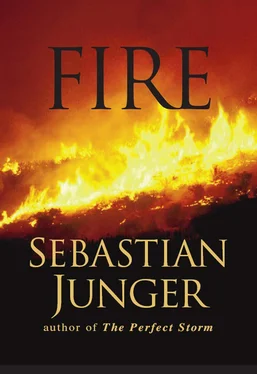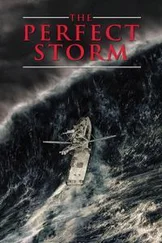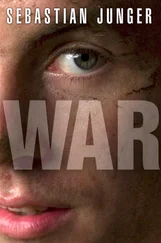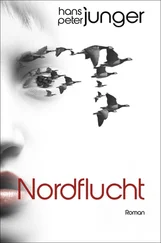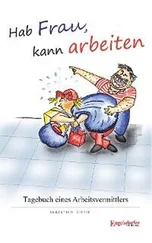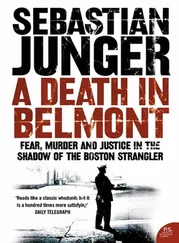By the 1950s, 20 percent of the stones on the world market were thought to have been smuggled out of Sierra Leone, mostly through Liberia. De Beers found itself facing a choice: Lose control altogether of the Sierra Leone diamond trade or open an office in Monrovia, the capital of Liberia, to buy back all the stones that were being mined illegally. Of course, they set up the buying office. In the end the licensing system proved untenable, and in 1963 the newly independent government of Sierra Leone bought back most of the mining rights to the country. For the first time, diamond licenses were made available to the locals, and a patronage system developed whereby diamond buyers—Lebanese, for the most part—fronted people money to start mining operations and then bought the stones that were found.
In the 1980s De Beers closed its buying office in Liberia, but that has done little to impede the flow of Sierra Leonean diamonds to Antwerp. Now the majority of people running mining operations up-country are local Lebanese and a handful of foreigners. We found Gregg Lyell drinking a Coke at the Capitol Bar in Kenema. Kokero, who seemed to know everybody, spotted him and brought him over. Lyell, now in his fifties, is an American who came to Sierra Leone several years ago to buy diamonds and wound up staying. He married a local woman and sat out the 1997 coup in Freetown with a gun on his lap. Now he was running a dredge mine that sucked gravel off the bottom of the Sewa River between Kenema and Bo.
“Dredge mining is all hit-or-miss,” Lyell explained. “The divers take a propane bottle and an air compressor, stick a hose in it, tie a rag around their eyes to keep the dirt out, and go down and dredge. You pump everything into a canoe, drag it to shore, and go through it with a kicker”—a sieve—“and then flip that over on the bank. Diamonds are heavier than most other stones, so the ones that worked their way down to the bottom of the kicker will now be on top.”
Dredging can be dangerous, but that’s where the diamonds collect—in the gravel along the river bottom. There are supposed to be enormous diamond deposits off the coast, at the mouths of the Sewa and Mano rivers, but seabed dredging is extremely expensive. Lyell said his divers worked thirty to fifty feet down for half an hour at a time and wore sandbag weight belts to keep themselves on the river bottom. Some divers are known to sacrifice sheep before starting to work. They make sure the blood mixes with the river water to safeguard their lives.
“I started studying diamonds back in the States,” Lyell said. “Let’s just say that once upon a time I was a bad boy and found myself with a lot of time on my hands…. I’ll probably stay here for a while. I was supposed to go to Mali to buy some gold, but that didn’t happen.”
Lyell wore his hair cropped short in front with a ponytail and had the beginnings of a thin goatee. Like everyone else, he was sweating heavily in the afternoon heat. A truck filled with miners rattled by at one point, and Lyell pointed at it. “Tongo Field,” he said. “Trucks go up there every day.”
“Tongo Field?” I asked. “Isn’t that RUF territory?”
Lyell didn’t say anything. He just looked at me with an expression that I’d already begun to recognize: the expression of someone who has devoted his entire life to diamonds and finds himself dealing with someone who hasn’t.
By the time we left Kenema, three days later, the situation had deteriorated to the point where we’d begun to wonder if we’d even have trouble getting back into Freetown. As many as five hundred peace-keepers were now being held hostage around the country, a Guinean Army contingent had been forced to flee an important base called Rogberi Junction, and the rebels were rumored to have reached Hastings Airport, on the outskirts of Freetown. This last proved to be untrue, but just the rumors were enough to trigger widespread panic. It was starting to look like January 6 all over again.
There were checkpoints on the Bo–Kenema road every few miles now, and they were manned by Kamajors with guns. These were the first guns we’d seen in the country, apart from UN peacekeepers’ weapons, and it was a bad sign; it meant that the government had given up on the UN and had decided to take matters into its own hands. As soon as we drove into Bo, it was clear something was up; there were too many groups of men on the street, too many trucks rumbling in and out of town. We dropped our bags off at the hotel and walked back to the Civil Defense Headquarters, where we’d seen a crowd of several hundred Kamajors.
The commotion started as soon as we arrived. “We de go kill dem! We do go kill dem!” one Kamajor started shouting in Krio, jamming a round into his grenade launcher. He climbed into a car with five or six others and sped off down the street. The weapons had materialized out of nowhere, and every man had one: rocket-propelled grenade launchers and Kalashnikovs and sleek black FN assault rifles and even old shotguns and sabers left over from colonial days. They had come from the bush, these men, and they’d brought with them their protective magic and their claims of special powers. They wore sackcloth tunics and fishnet shirts studded with crocheted pouches that were supposed to stop bullets. They sewed cowrie shells onto their clothing and wore bone necklaces that hung down over their ammo belts and clacked against their guns. One guy had nothing on but shorts and a pink ski parka hood. Another had a headband made of live machine-gun rounds. They stood in angry little clusters around shortwave radios listening to the afternoon BBC report and slapping ammo clips into their guns.
That morning, apparently, several thousand protesters had gathered at Sankoh’s compound to protest the war, and Sankoh’s bodyguards had opened fire. Television footage showed teenage boys in civilian clothes emptying banana clips into the crowd. One bodyguard even fired off a rocket-propelled grenade. Some accounts had Sankoh pleading with his bodyguards not to shoot, and other accounts had him standing on the balcony with a machine pistol, directing the attack. Nineteen civilians were killed, and scores were wounded. Later that day a group of irregulars stormed the house and killed some of the bodyguards, but Sankoh himself had fled. There were rumors that he had escaped in a UN vehicle, or that he was hiding in Freetown, or that he’d fled into the bush and was making his way back to rebel lines. Government forces rounded up two dozen RUF officials in Freetown and detained them, and Kamajors had done the same thing in Bo. In the meantime the rebels were advancing down the road to Freetown and had hit a town called Waterloo, only twenty miles away.
“You didn’t hear it from me,” a UN military observer near Bo told me that afternoon, “but it’s going to be like the fall of Saigon when we pull out.”
The next morning, British SAS in two big Chinook helicopters came pounding in low from the south and landed at the dirt airfield outside Bo. They took on twenty or thirty foreign-passport holders, including Teun and me, and then roared back to Freetown. They flew twenty feet above the forest canopy, and when we passed over little villages, we could see people run out of their huts to watch.
The first place Teun and I went when we got back to Freetown was Sankoh’s house. It was early morning, and there was no one there; the gate had been torn off its hinges, and twisted clothes and spent bullets littered the yard. We stepped inside and sloshed through water that was three inches deep over the marble floors. Somewhere it was still running, gurgling out of a pipe where protesters had torn the plumbing out of the walls. There were women’s panties and bras on the towel rack in the bathroom, as well as an empty bottle of 1998 Laurent Grand Siècle Ferme. In the upstairs bedroom there was an empty box of 70-mm ammo. Papers were scattered everywhere, and syringes—thousands of them, used and unused—lay piled in the corners like drifted snow.
Читать дальше
